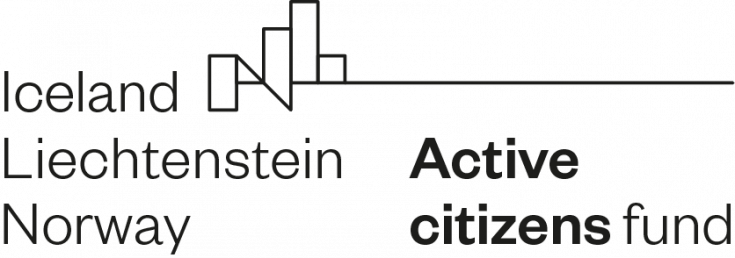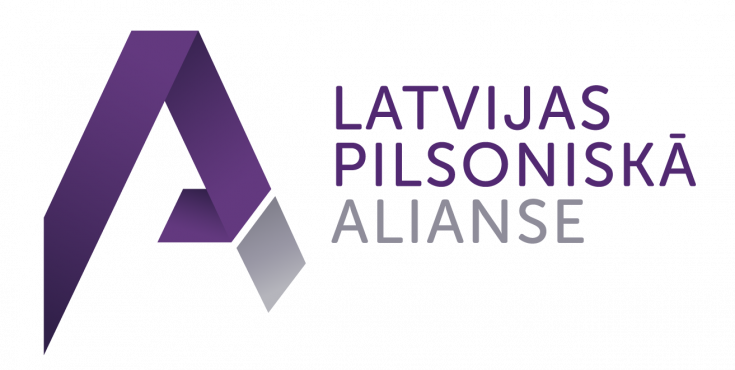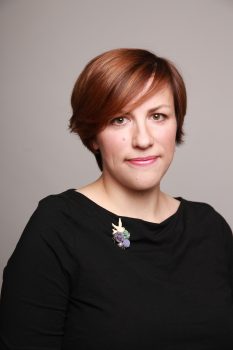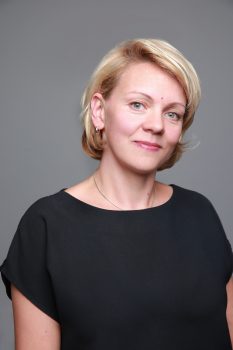Foto: Pixabay
Summary of the "Research on the sector of civil society organisations in Latvia 2020-2024: Problems and solutions of the classification of Latvian associations and foundations". The aim of the research is to conduct an analysis of the data and situation of civil society organisations in order to identify the forms and areas of activity, financial volumes and flows of civil society organisations, and thus plan the future activities and development of the civil sector as effectively as possible. During the research, the data of civil society organisations (place of operation, current assets and other characteristics) were analysed, as well as the existing classification systems of associations and foundations in Latvia were analysed. Future research will address issues such as the funding base of NGOs and the attraction of human resources, as this would allow a more detailed study of the challenges of Latvian organisations and their contribution to the Latvian economy. Full text can be read in Latvian language.
Summary
By the end of 2020, there were 24,367 associations and foundations registered and active in Latvia, operating in various fields and performing various activities. The activities of NGOs are registered for various purposes, the three most important of which are:
-
- registration of economic activities of organisations,
- the register of organisations according to their field of activity or NGO classification rules,
- as well as accounting of those organisations that perform public benefit work.
Although different classification rules exist, they do not give a clear idea of NGOs, because organisations are often unable to identify their economic activity or register their field of activity in the Register of Enterprises of the Republic of Latvia. Data on NACE codes registered by NGOs show that no NACE code is registered for about 2993 associations and foundations, while 39% of NGOs that have registered their economic activity have indicated NACE code 94.99 “Activities of organisations not elsewhere classified”. A similar picture can be seen when analysing data on the activities of NGOs; only 1/10 of NGOs have indicated their field of activity, where 169 NGOs have indicated “15. Association or foundation not elsewhere classified” as the only or one of the fields of activity.
The unclear overall picture of the NGO sector has negative consequences. Without comprehensive and complete data, it is not possible to separate and analyse TSOs from the NGO sector[2], their fields of activity, economic activities, as well as financial and other indicators. This uncertainty leads to an increased risk assessment of NGOs in their relations with the financial sector. Uncertainty in the accounting of the NGO sector prevents NGOs from reaching a specific target area when it is needed, for example to identify potential recipients of state aid to mitigate the effects of the COVID 19 pandemic.
Conclusion No. 1. There are many different tools in Latvia for obtaining and compiling information on NGO activities, but none of them give a clear picture of either the NGO sector or civil society organisations, allowing them to be separated from NGOs and obtaining comprehensive information on the fields of activity of organisations, economic activities.
The research evaluated the operation of the current classification of NGOs or the classification of economic activities, the operation of the classification of fields of activity, the content of this classification, the procedure and practice of application, interconnection, as well as the connection with the status of public benefit organisations. Thanks to the support of Lursoft, the research provided basic data on the registered business objectives, fields of activity, NACE classification and other information that was very important to assess the overall situation of NGO registers. Within the framework of the research, the conclusions of the data analysis as well as possible solutions were discussed with the main stakeholders several times. For the purposes of the research, a study of foreign practice was also conducted.
The research concluded that, in general, the classification of NGOs by fields of activity provides significantly more information on the NGO sector than the NACE codes, and it is easier for NGOs to find themselves in this classification, as only about 4% of NGOs, who have indicated their field of activity, have chosen “An association or foundation not elsewhere classified” as their field of activity, but it should be recalled that these data are currently limited in scope, as only about 1/10 of NGOs have voluntarily registered their field of activity. The vast majority of NGOs have not yet registered their fields of activities. This is one of the most important problems of this classification, as it does not achieve its goal – to get an idea of the NGO sector.
Other major problems with the classification of NGO fields of activities are related to the shortcomings of the classification itself. For example, paying particular attention to the reasons why NGOs tend to refer to their association as an “association or foundation not elsewhere classified”, it was concluded that in most cases, organisations with a high probability would be able to identify their activities more accurately, but there is a lack of methodological support to do so correctly. In turn, for a significant group of NGOs, such a choice to register the field of activity is due to the fact the current classification includes the field of activity of the organisation. Among the most frequently missing fields are: the club of interests and the development of civil society. These and other shortcomings of the classification are described in more detail in the research. On the other hand, linking the activities of NGOs to certain NACE codes creates more confusion; it does not describe the situation in practice.
The data show that the activities of NGOs are very diverse; according to Lursoft data, NGOs have indicated 237 different NACE codes, and according to information from the SRS, NGOs use 350 different NACE codes. These codes of economic activity include NACE codes that are not specific to the NGO’s activity. For a comparison, the classification of NGO activities includes only 33 NACE codes.
Conclusion No. 2 In order for the information on the NGO sector to be comprehensive and complete, significant improvements shall be made to the current procedure, requiring all NGOs to indicate their field of activity, as well as substantially amending Cabinet Regulation No. 799 “Classification of Associations and Foundations”.
In general, during the focus group and discussions with NGO representatives, it was observed that the differences between the various registers and the purposes of registration are difficult for NGOs to understand, organisations lack information and knowledge on what organisations should register and where. The information provided by the responsible authorities shows that organisations rarely update the information they have provided about themselves in the field of activity or business registers.
In order to solve the problems identified by the various registers, the authors of the research developed three possible solutions, which were also discussed with the involved parties – representatives of state institutions, financial institutions and NGOs.
Solution No. 1: Minor adjustments to existing system
The classification of NGO fields of activity is supplemented with the missing NGO fields of activity; Improvements are being made to the classification of NGO activities: a) separating operating methods from fields of activity; (b) clarifying the descriptions of the fields of activity.
Solution No. 2: Major fields of activity
The expansion of NGO fields of activity is reduced to “major NGO activities”. It is possible that the fields of public benefit status are integrated with the corresponding areas of activity of NGOs in the regulations of the Cabinet of Ministers (namely, these fields are merged in the list of 20-25 fields).
Solution No. 3: Basis of classification NACE codes
The classification of NGOs uses international classification systems, integrating them with the areas of activity of NGOs. Solution No. 3 has at least two implementation options. In Option 3A: Latvia is establishing its national classification system, which forms the fifth level of the NACE classification. This allows the creation of a subsystem of NGO fields of activities under NACE code 94.99 “Activities of organisations not classified elsewhere”. In option 3B: The current classification of NGO fields of activities is being transformed by taking over the ICNP/TSO classification developed by the UN Statistical Commission in 2017 (it is compatible with NACE).
All options require NGOs to register their field of activity. Also, all options require that the registration of the field of activity be made more convenient and dynamic (reflecting changes over time); each of the options proposed by PROVIDUS will require a change in the legal framework.
Conclusion No. 3 When choosing the best of the offered solutions, it shall be ensured that:
– Information on NGO activities is comprehensive and complete;
– Information on NGO activities is up-to-date and regularly updated;
– The administrative procedures for indicating and updating information are simple and convenient;
– Data on the NGO sector converge into a single data holder, thus facilitating access to data for any interested party (including NGOs, public authorities, financial institutions);
– NGOs are knowledgeable and effective support tools have been created to help NGOs understand, find and indicate their field of activity.
Information about the research:
In October 2020, the Latvian Civic Alliance launched the Active Population Fund programme project “Research on the Sector of Civil Society Organisations in Latvia 2020-2024”, the aim of which is to prepare regular reports on the activities of civil society organisations in Latvia, their development trends and necessary legal and financial environmental improvements. The project will last a total of 4.5 years.
Within the project, 3 research projects will be developed:
- The 1st research “Problems and Solutions of the Classification of Latvian Associations and Foundations” was conducted from October 2020 to March 2021. The aim of the research is to conduct an analysis of the data and situation of civil society organisations in order to identify the forms and areas of activity, financial volumes and flows of civil society organisations, and thus plan the future activities and development of the civil sector as effectively as possible. During the research, the data of civil society organisations (place of operation, current assets and other characteristics) were analysed, as well as the existing classification systems of associations and foundations in Latvia were analysed. Future research will address issues such as the funding base of NGOs and the attraction of human resources, as this would allow a more detailed study of the challenges of Latvian organisations and their contribution to the Latvian economy. The 1st research addressed these issues indirectly in the context of key facts and classifiers, but did not analyse these data in depth. The conclusions and data obtained in this research will also be studied in depth in research No. 2 and No. 3.
- The 2nd research will be carried out from January to September 2022 with the aim of studying in more detail the specific aspects of civil society organisations and issues of organisational capacity, funding resources – attraction and absorption, as well as data on the attraction of human resources to the sector. A methodology will be developed to measure the impact of civil society organisations on socio-political processes (campaigns carried out, visibility, draft laws affected, etc.) and to measure the multiplier effect, so that the data obtained can be used in the future activities of representation of interests of civil society organisations and in promoting the development of the civil society sector. Within the framework of the 2nd research, work will be continued on the conclusions made within the framework of the 1st research, namely, the development of the classification of NGO activities will be followed, as changed, improved classification could completely change the information available on civil society organisations, as well as the organisations’ vision of the field they represent. The information on the classification will continue to be used in the research.
- The 3rd research will be conducted from June 2023 to April 2024 and aims to collect factual information on civil society organisations, analyse base data and develop recommendations for the further development of civil society. This research will also analyse changes in the areas of activity, capacity, attracting financial and human resources of civil society organisations from 2019 to 2023, as well as assess the effectiveness of the impact methodology developed in Research No. 2.
Free download: www.nvo.lv & www.providus.lv
Gratitude:
Thank you to everyone who participated in the research – non-governmental organisations, public authorities and financial institutions. Special thanks to SIA “Lursoft IT” for responsiveness, compiling and preparing data sets on non-governmental organisations (associations and foundations) for the needs of the research, as well as creating an opportunity to access other information related to the activities of the organisation (statutes, annual reports).
Research methodology:
The researchers obtained statistical data available in various public registers – number of organisations, indicated fields of activity, indicated codes of economic activity, financial amounts. The researchers analysed the statistical data obtained and summarised the main conclusions in order to understand why the available data do not provide a clear and true picture of the forms and areas of activity, financial volumes and flows of associations and foundations.
Within the framework of the research, 3 foreign experiences were identified – Lithuanian and Estonian, and the “NGO Classification Standards” developed by the United Nations were discussed in more detail. There were two meetings with foreign experts – a Lithuanian expert and an Estonian expert. On 2 February 2021, a meeting took place with Lithuanian expert Inga Aksamitauskaite. The meeting took place in a ZOOM environment. On 15 February 2021, a meeting was held with an Estonian expert who represented the Estonian Information Systems Department at the Estonian Register and Information Systems Centre – Kairi Kruusma. The meeting took place in a ZOOM environment. Written comments were also received from Lithuanian and Estonian experts.
Within the framework of the research, 4 focus group discussions took place: On 24 February and 26 February 2021 with representatives of NGOs and on 2 March and 4 March 2021 with representatives of state institutions and financial institutions.
Within the framework of the research, the practice of applying the NGO classification was analysed, analysing the following issues:
1. How accurately organisations are able to classify themselves according to the NGO scope classification. 60 organisations that have registered their field of activities have been selected at random (indicating 1/2/3 of the activities), for which the authors of the research reassessed the scope and compared the results obtained with those indicated by the organisations themselves, analysing the possible reasons for the discrepancies.
2. Is it difficult for organisations that have indicated their field of activity as “an association or foundation not elsewhere classified” to find themselves in the current classification of the fields of activity of NGOs? A total of 96 organisations were selected with an “Association or foundation not elsewhere classified” listed as their field of activity, and based on publicly available information about the organisations (statutes, annual report, publicly available information), an assessment was made of whether the activities of these organisations have an appropriate scope in the NGO classification regulations.
3. Would it be possible for organisations with 10 or more fields of activity to identify a smaller number of fields of activity, i.e., the most important fields of activity? All 34 NGOs with a large number of fields of activities (10 and more) were selected and, based on publicly available information, it was assessed whether the organisation could be characterised by a smaller number of fields of activities.
4. Do start-ups understand the classification of NGO fields of activities? Within the framework of the research, a questionnaire was developed and those NGOs that were registered in the Register of Enterprises of the Republic of Latvia in the period from 2018, 2019 and 2020 (and that had not indicated their field of activity) were surveyed. With the help of a survey of newly established organisations, their understanding of the NGO’s classification of fields of activity and their ability/interest to identify their field of activity was clarified.
This research “Problems and Solutions of the Classification of Latvian Associations and Foundations” has been prepared with the support of Iceland, Liechtenstein and Norway through the EEA and Norwegian Grant Programme “Active Population Fund”. The Latvian Civic Alliance is responsible for the content of the material.



Pētījums. Latvijas biedrību un nodibinājumu klasifikācijas problēmas un risinājumi



